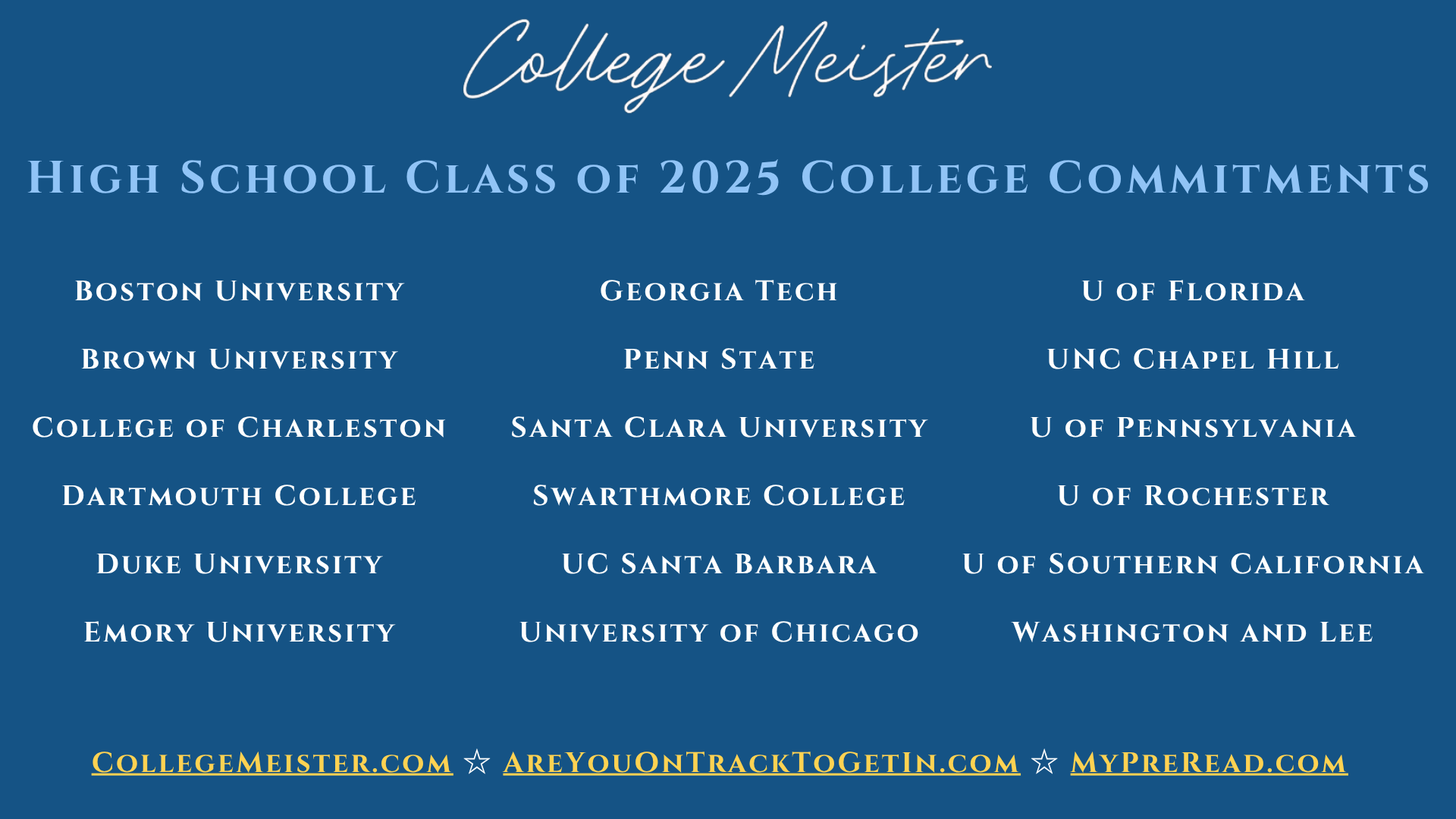 The process of applying to colleges often resembles piecing together an intricate puzzle: standardized test scores, extracurricular activities, personal statements, comparison among institutions, and GPAs all play a role. Fortunately, students are not alone in this arduous journey. With appropriate resources and professional insights, the entire undertaking can become far more streamlined—and even put students in control.
The process of applying to colleges often resembles piecing together an intricate puzzle: standardized test scores, extracurricular activities, personal statements, comparison among institutions, and GPAs all play a role. Fortunately, students are not alone in this arduous journey. With appropriate resources and professional insights, the entire undertaking can become far more streamlined—and even put students in control.
Why College Counseling Matters More Than Ever
Navigating the modern college admissions process can be overwhelming, especially for high-achieving students aiming for top-tier schools. That’s where Empowerly’s Boston college counselors step in; they offer personalized support that goes beyond the basic high school resources by providing families with expert knowledge on admissions trends, essay strategies, extracurricular choices, and more.
The benefit of working with seasoned counselors lies in their ability to craft a strategy tailored to each student’s strengths and ambitions. They help identify ideal-fit schools, demystify financial aid options, and streamline the application timeline—ensuring no important step gets missed. From developing a compelling narrative to creating a strong supplemental materials package, college counselors act as project managers for the most important application a student may ever submit.
If you are aiming for Ivy League or even standout public universities, an informed advisor can greatly enhance your application. With the increasing focus on holistic admissions, counselors assist students with formative storytelling, selection of appropriate institutions, and meeting intricate multifaceted requirements. They can even help with interview preparation and last-minute application polishing.
GPA Isn’t Just a Number—It’s Your Academic Foundation
While many students obsess over test scores, it’s important not to underestimate the role of your GPA. As detailed in The Importance of a GPA, your grade point average is one of the first indicators colleges use to assess your academic consistency, work ethic, and preparation for college-level work.
But it’s not just about hitting a perfect 4.0. Many strong institutions consider students with slightly lower GPAs—particularly when it’s clear they’ve challenged themselves with honors, AP, or IB coursework. Empowerly emphasizes that it’s not just about the number, but the context behind it. Did your GPA trend upward? Did you balance tough classes with meaningful extracurriculars? Counselors can help you present that story effectively.
It’s also crucial to recognize that GPA plays a foundational role beyond admissions—it can influence scholarship eligibility and placement into honors programs or advanced freshman-year courses. Long-term, it reflects your ability to manage academic rigor over time—a quality colleges deeply value. By starting GPA planning early in high school, students gain greater flexibility and reduce the stress of last-minute academic repair work.
Not All Colleges Have the Same Requirements
One of the most confusing aspects of applying to college is knowing where you stand—especially when your GPA isn’t perfect. Empowerly’s resource on Colleges That Accept a 3.7 GPA breaks down which schools are within reach for students who might fall just below the top percentile but still boast strong academics.
From flagship state universities to private liberal arts colleges, many schools welcome students with a 3.7 GPA—particularly if the rest of the application shines. Empowerly’s database offers transparency that helps students target schools where they can thrive both academically and socially.
Additionally, colleges are increasingly interested in “mission fit.” That means they want to admit students who align with their values and goals. A school focused on sustainability, for instance, may prioritize applicants with environmental activism experience—even if they fall slightly short on GPA. Counselors help students match their strengths to schools with open-minded and diverse admissions criteria.
Make the Most of Your Free Time: Internships & Activities Matter
GPA is important, but so is how you spend your time outside the classroom. In today’s competitive admissions climate, unique extracurriculars can help you stand out. Empowerly’s list of 40 Internships for High School Students is a fantastic starting point for finding real-world experiences that match your academic interests.
Internships provide opportunities for students to work in research labs, nonprofit organizations, or even newly established companies. Such positions help students to ascertain what careers they may want to pursue, learn new skills, and take the initiative. Through Empowerly, counselors help devise engaging narratives for personal statements and interviews stemming from such experiences.
Beyond internships, students should also consider research opportunities, summer programs, volunteerism, and creative projects. A well-rounded extracurricular profile doesn’t need to be flashy—it needs to reflect consistency, initiative, and impact. Empowerly’s team ensures that students don’t just list activities but leverage them to convey depth and character.
Building a Strong Application Strategy
Ultimately, college admissions is not about checking boxes—it’s about telling a cohesive and authentic story. Every essay, every recommendation, and every grade contributes to a larger narrative. Empowerly helps students zoom out, look at the bigger picture, and make sure every component of their application works toward the same end.
They also provide families with key organizational tools: customized timelines, resource libraries, and deadline checklists. Instead of juggling multiple spreadsheets and documents, students and parents can rely on a centralized plan of action. This keeps the process less chaotic and more empowering.
Furthermore, Empowerly’s use of AI-powered tools in combination with human advisors helps assess admission probabilities, identify overlooked application strengths, and spot essay weak points early in the drafting process. It’s a modern solution for a modern admissions challenge.
The Bottom Line
Having the right expert resources shifts the college admissions process from a guessing game, to a well-thought out gameplan. Every action done, like choosing the right-fit schools, exploring optimal extracurriculars, and valuing GPAs, influences the college journey positively.
Equipped with Empowerly’s personalized counseling, GPA-focused materials, and extracurricular guides, students are able to approach admissions with confidence, clarity, and a strong edge over the competition.
 The 2025-2026 college admissions process is almost upon us. This means it’s an important time for members of the high school Class of 2026 – especially those who want to run the gauntlet this admissions cycle – to be aware of the the five colleges with the most grueling standardized test requirements for first-year admission.
The 2025-2026 college admissions process is almost upon us. This means it’s an important time for members of the high school Class of 2026 – especially those who want to run the gauntlet this admissions cycle – to be aware of the the five colleges with the most grueling standardized test requirements for first-year admission.





 To the high school Class of 2025, and especially my remarkable cohort of graduating seniors, I extend my heartfelt congratulations!
To the high school Class of 2025, and especially my remarkable cohort of graduating seniors, I extend my heartfelt congratulations!
 Your application journey includes creating an impressive college admissions essay, which holds great importance. This essay allows you to showcase your personality, which cannot be deduced from your scores and grades. However, a majority of students struggle with choosing a topic. Don’t worry if you’re having difficulty with the brainstorming stage; this guide will explore useful methods to help you uncover genuine ideas that will elevate your essay.
Your application journey includes creating an impressive college admissions essay, which holds great importance. This essay allows you to showcase your personality, which cannot be deduced from your scores and grades. However, a majority of students struggle with choosing a topic. Don’t worry if you’re having difficulty with the brainstorming stage; this guide will explore useful methods to help you uncover genuine ideas that will elevate your essay.